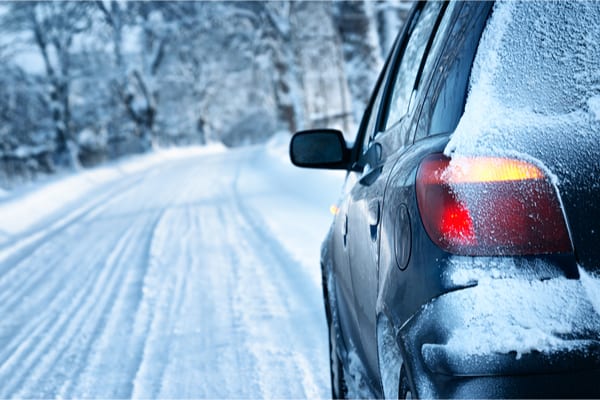Most of us don’t have the luxury of staying home during extended extreme cold conditions, so knowing the keys to Car Safety this Winter could very well save your life.
Don’t Warm Up Your Car While It’s Unattended
Although letting your car heat up before you hop in can be tempting, leaving your car running when you’re not around offers the perfect opportunity for thieves to steal it. Instead, have a family member wait inside it while you finish getting ready, and then switch “shifts” with them when you have finished. Alternate who goes first to keep it fair.
Keep Up on Fluid Levels
Service the radiator and maintain antifreeze level; check tire tread or, if necessary, replace tires with all-weather or snow tires.
Keep gas tank full to avoid ice in the tank and fuel lines.
Use a wintertime formula in your windshield washer.
Know Your Forecast
Check current and forecast weather conditions and know what they mean:
- Freezing Rain – Rain that freezes when it hits the ground, creating a coating of ice on roads, walkways, trees and power lines.
- Sleet – Rain that turns to ice pellets before reaching the ground. Sleet also causes moisture on roads to freeze and become slippery.
- Winter Weather Advisory – Winter weather conditions are expected to cause significant inconveniences and may be hazardous. When caution is used, these situations should not be life threatening.
- Winter Storm Watch – A winter storm is possible in your area. Tune in to NOAA Weather Radio, commercial radio, or television for more information.
- Winter Storm Warning – A winter storm is occurring or will soon occur in your area.
- Blizzard Warning – Sustained winds or frequent gusts to 35 miles per hour or greater and considerable amounts of falling or blowing snow (reducing visibility to less than a quarter mile) are expected to prevail for a period of three hours or longer.
- Frost/Freeze Warning – Below freezing temperatures are expected.
- Avoid traveling when the weather service has issued advisories.
- If you must travel, inform a friend or relative of your proposed route and expected time of arrival.
Assemble a Car Emergency Kit
Prepare a winter emergency kit to keep in your car in case you become stranded. The kit should include:
- Cell phone, portable charger, and extra batteries;
- Blankets;
- Food and water;
- Booster cables, flares, tire pump, and a bag of sand or cat litter (for traction);
- Compass and maps;
- Flashlight, battery-powered radio, and extra batteries;
- First-aid kit; and
- Plastic bags (for sanitation).
Stranded Motorist Safety
If you do become stranded, follow these steps so you can be safe while waiting for help.
- Make your car visible to rescuers. Tie a brightly colored cloth to the antenna, raise the hood of the car (if it is not snowing), and turn on the inside overhead lights (when your engine is running).
- Move anything you need from the trunk into the passenger area. Stay with your car unless safety is no more than 100 yards away.
- Keep your body warm. Wrap your entire body, including your head, in extra clothing, blankets, or newspapers. Huddle with other people if you can.
- Stay awake and stay moving. You will be less vulnerable to cold-related health problems. As you sit, keep moving your arms and legs to improve circulation and stay warmer.
- Run the motor (and heater) for about 10 minutes per hour, opening one window slightly to let in air. Make sure that snow is not blocking the exhaust pipe—this will reduce the risk of carbon monoxide poisoning.
—
Photo Credit: LeManna / Shutterstock.com
